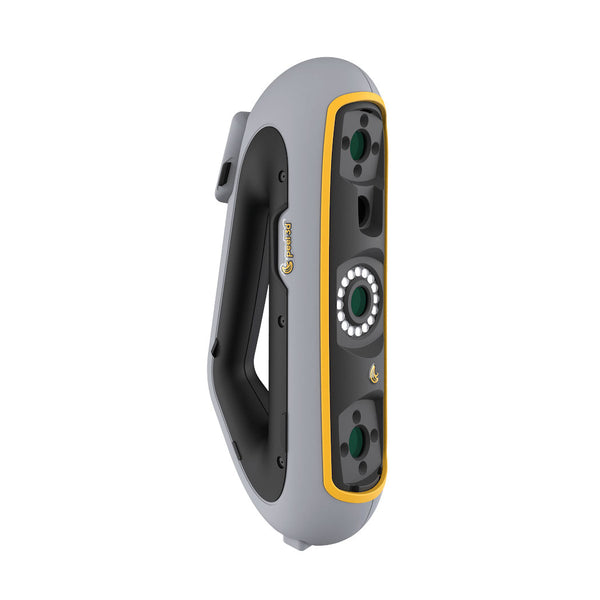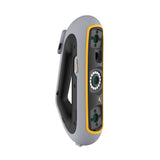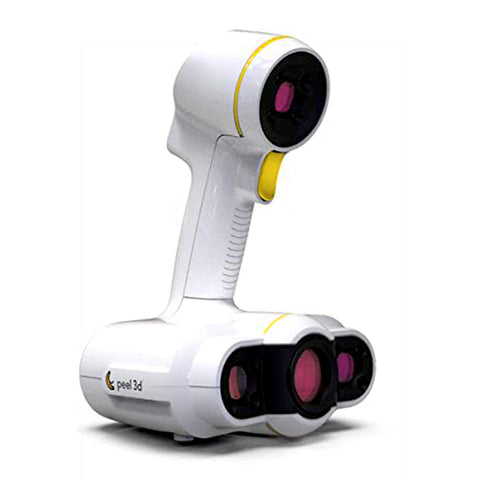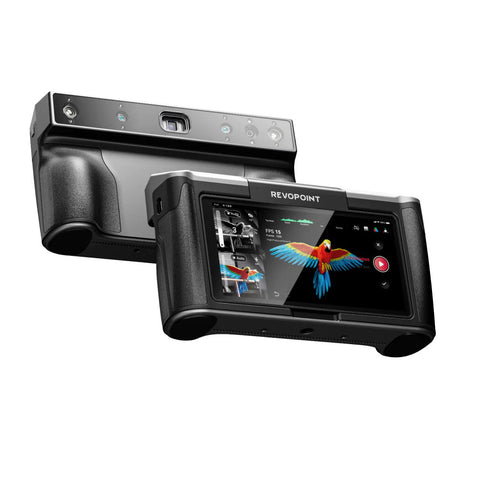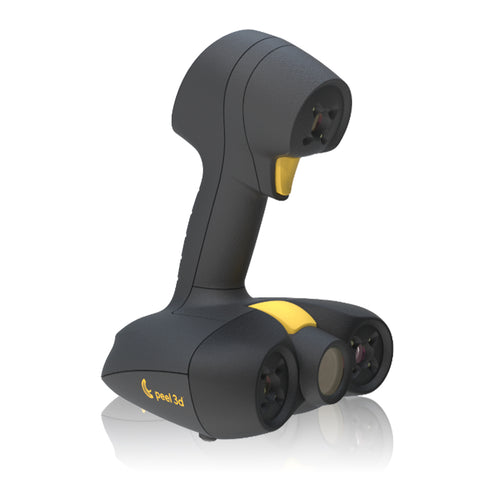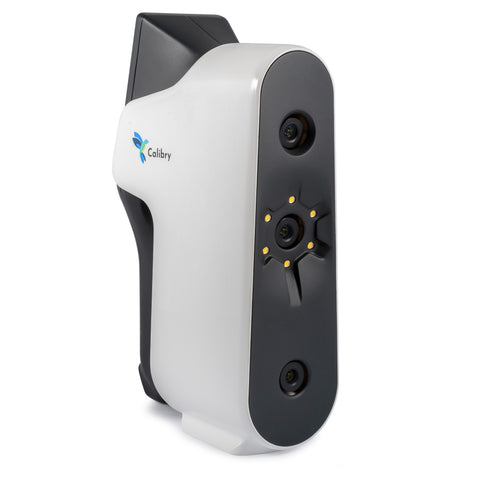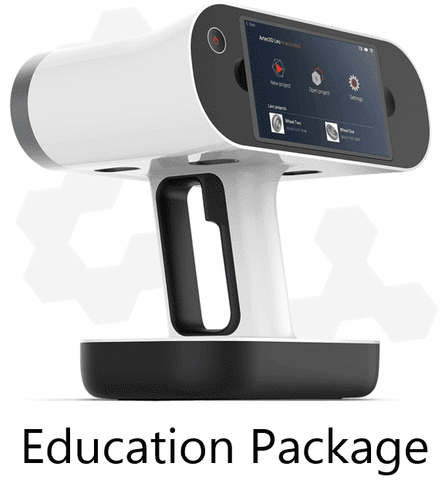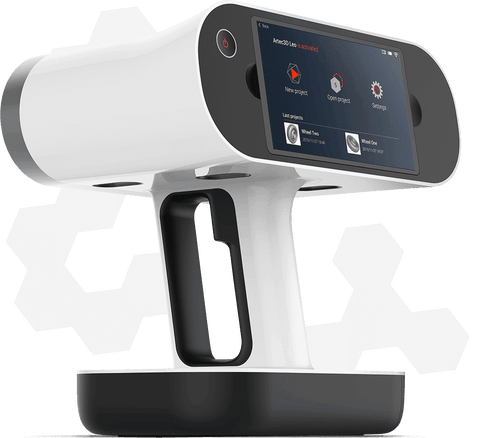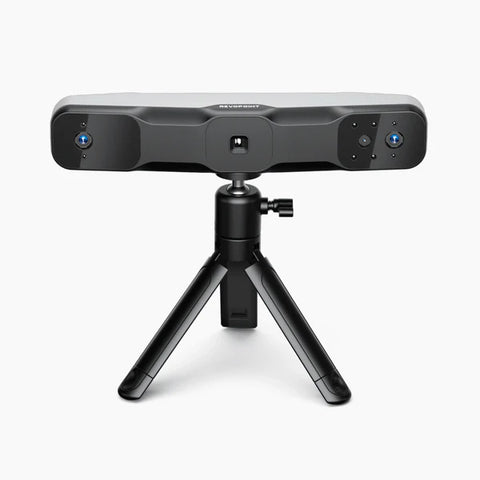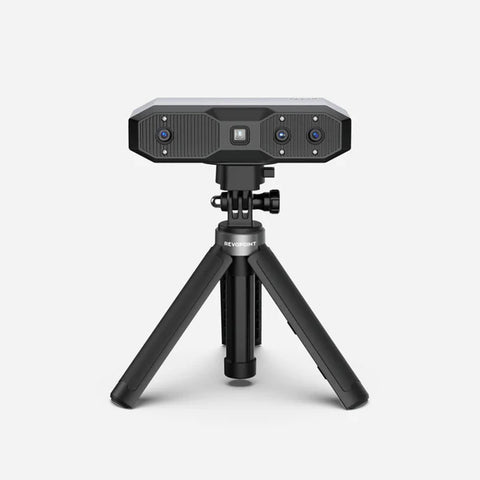peel 3 3D scanner
peel 3 can handle any application in: aftermarket & tuning, AR, VR & digital content, education, heritage preservation and art, product design, healthcare, and MRO and engineering.
Includes:
- High-quality, professional-grade 3D scanner
- peel.OS data acquisition software
- Starter package of positioning targets
- Foam insert as a light-duty carrying case
- Power supply
- USB Cable (4 m)


peel 3 3D scanner
peel 3 takes your 3D scanning experience to new heights. Everything about peel 3d scanners has been redesigned, rethought and revamped. For an affordable turnkey professional-grade 3D scanning solution, peel 3 packs a powerful performance punch.
- High-fidelity objects
- Digital archiving
- Human anatomy
- Orthotics and prosthetics
- Converts handmade objects to digital
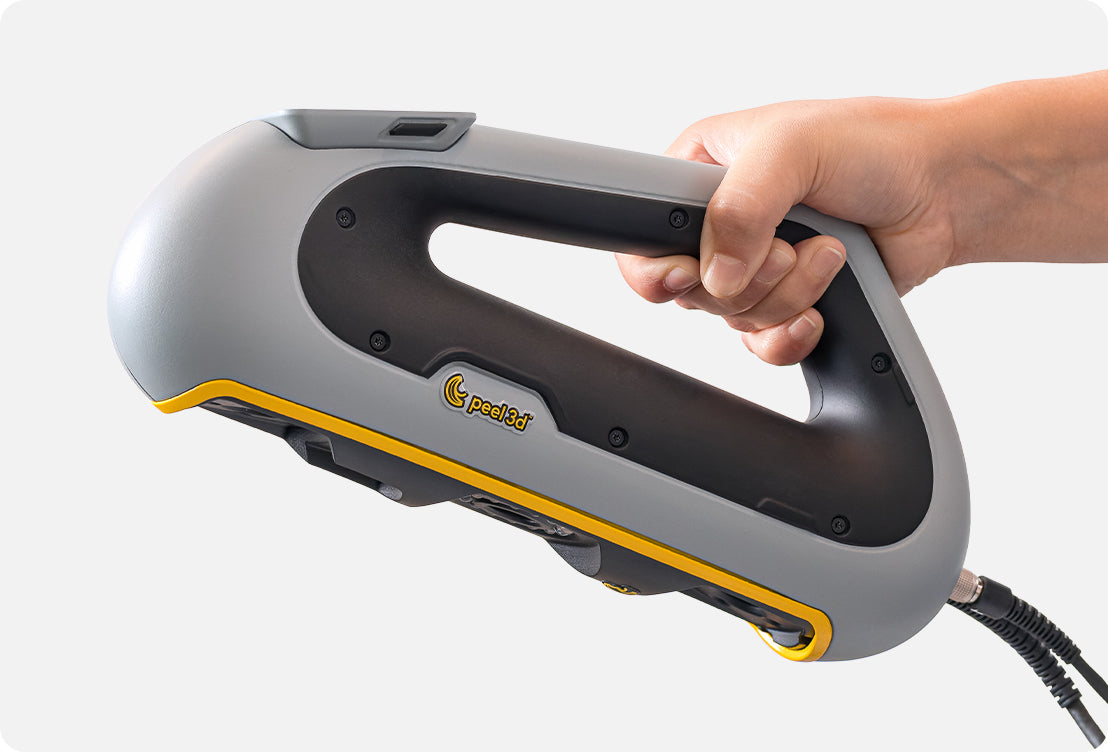
Ultra-ergonomic handle
peel 3's unique multi-grip triangulated handle has been designed to be comfortable in most common 3D scanning positions.
Slick LCD screen
This multi-function and intuitive touchscreen gives you a brand-new way to interact with your peel 3d scanner. It can also be used as a distance meter to easily scan without looking at your computer.


Feel the difference with haptic communication
A world premiere for handheld 3D scanners, peel 3 features several recognizable vibration patterns to guide you as you scan narrow and hard-to-reach places without a direct line-of-sight. That’s real-time feedback at its best!
SOFTWARE
You can't go anywhere without a good software
peel 3 comes with peel.OS, a highly simplified data acquisition software that enables you to process, clean, align, improve and export your 3D scanning data. Thanks to the guided workflows, assisted merge of multiple scans and integrated help, you’ll be scanning with confidence in no time flat!
New, simpler, design
Guided workflows help you quickly optimize the way you work.
Easy to learn
Integrated help functions make it easy to get the help you need when you need it.
Connected
Kickstart your efficiency by accessing peel 3d's community and tools.

Look how easy it is!

1. SCAN THE OBJECT
Both the object and scanner can move freely: you see what you've scanned and what you've missed in real time.
2. FINALIZE MESH
Clean up and align your 3D scans like a pro with tools you simply will not find in any other affordable solutions.


3. PREP YOUR SCANS FOR FURTHER TREATMENT
Finish your 3D scans in the blink of an eye before sending it to another software or generating the file.
The best part? It's all included!
Get our software and some accessories for free when you buy peel 3

A foam insert as a light-duty carrying case
Data acquisition software
Power supply
USB cable
Regular positioning targets
Super-adhesive positioning targets

Protect your 3D Scanner
We offer the perfect protection kit for your peel 3d scanner. It includes a custom silicone sleeve, removable lens cover, a gorilla glass protector and a truly brilliant cable winder! Say goodbye to mechanical degradation!
Transport your scanner
Carry your peel 3D scanner with you anywhere with this watertight, crush-proof and dust-proof rugged case. Strong, yet lightweight, it's small enough to fit inside a plane's overhead bin!


Other Accessories
Discover a range of 3D scanning accessories to accelerate your workflows and productivity.
APPLICATIONS & SPECIFICATIONS:
Fields of application
peel 3d's global community of users has taken advantage of our high-performance, yet accessible 3D scanners for all types of applications. Here's some inspo!
If you're looking to carry out 3D scanning for heritage preservation and art, AR, VR & digital content, or healthcare, visit peel 3d's Applications section.
Heritage preservation & art

Pump up your 3D scanning versatility with peel 3d: it can handle any type of object surface or size.
AR, VR & digital content

Create ultra-realistic renderings without the headaches of photogrammetry. peel 3d rhymes with simplicity!
Healthcare

Count on a reliable 3D scanner to give you the reliability and peace of mind you need to achieve better patient outcomes.
Get creative
Don't limit yourself to just these applications. peel 3 offers a ton of possibilities!

Technical Spcifications
Explore the amazing performance levels of peel 3. This professional 3D scanner is really in a class by itself.| peel 3 | |
| Software | peel.OS, peel.CAD* |
| Recommended object size | 0.1 - 3.0 m |
| Accuracy | 0.250 mm/m, up to 0.1 mm |
|
Measurement Capabilities pin hole step wall |
1.5 mm 3.0 mm 0.1 mm 1.0 mm |
| Mesh Resolution | 0.250 mm |
| Scan Speed | 80 sec/m2 |
| Usage Distance (from object) | 250 to 550 mm |
| Projector Light Source | IR VCSEL |
| Scanner Controls | Touch Screen |
| Color Resolution (on object) | 250 DPI |
| Dimensions | 304 x 150 x 79 mm |
| Weight | 950 g |
| Connectivity | USB 3.0 |
| With peel 3.CAD only |
Why peel is different
Complete solution
Peel 3 come with dedicated 3D scanning software. Get more out of your investment with our turnkey solutions.
Easy to learn
Instinctive ergonomics. Intuitive interfaces. Learning to 3D scan scan take mere minutes.
New design
peel 3's comfortable design and distance meter enables users to scan effortlessly -- without the back and forth of the computer.
Help and support
We're always just an e-mail away! You'll never be left out in the 3D scanning dark with #teampeel.
Manufacturer Part Number: SYS-P3D-P3


